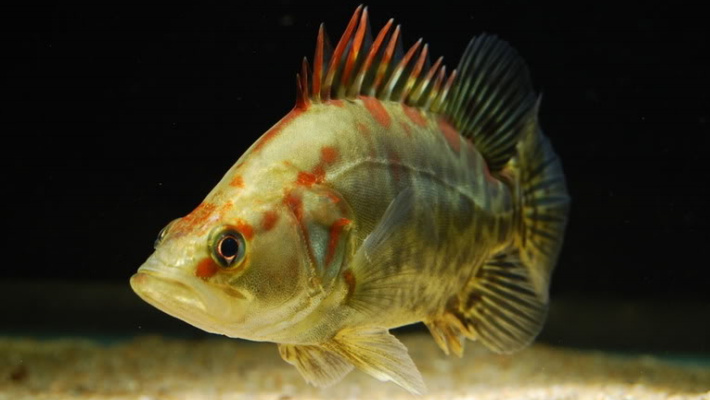|
Decomposition
of vascular plants,
including freshwater macrophytes, generally proceeds in three biological
stages: initial rapid loss of the matter due to leaching, microorganism
decomposition and macroinvertebrate processing, plus mechanical fragmentation of
the litter from the outset (for review, see Webster & Benfield, 1986). Smock
& Stoneburner (1980) offer an useful scheme to use visual cues to estimate
four stages of leave decomposition: furled, green (without external signs of
decomposition), partially decomposed yellowing leaves and decomposed brown ones.
In our
context, the most important parameter is decomposition rates of freshwater
macrophytes.
Generally,
freshwater Hydrocharitaceae (Elodea, Hydrocharis and Valisneria),
Nymphaeacea (Nuphar lutea, other
pond-lilies) and Najadaceae (Najas flexis,
numerous Potamogeton spp.) belong to the
group with the highest decomposition rates. Decomposition rates for these
species can 2-3 times (Webster
& Benfield, 1986) exceed the corresponding values for tree leaves (for
example, k = 0,035 day−1 for conditioned leaves of alder, Alnus glutinosa, in Germany: Hieber
& Gessner, 2002). In Podostemaceae (such as Podostenum ceratophyllum) and Typhaceae (Typha latifolia, other cattails), decomposition rates are less
achieving the minimum (less than 0,002 day−1) in Juncaceae (such as Juncus effusus).
Decomposition
rates of freshwater macrophytes is strongly dependent on site, water
temparature and other factors (e.g., Brock et al., 1982; Rodgers & Breen,
1982).
In
particular, Hill & Webster (1992) have studied decomposition rates of hornleaf
riverweed Podostemum ceratophyllum, Canadian
waterweed Elodea canadensis, curly
pondweed Potamogeton crispus, American water-willow
Justicia americana (Acanthaceae) and broadleaf cattail Typha
latifolia in the New River, Appalachia. Decomposition
rates for these species are 0,037; 0,026; 0,021; 0,016 and 0,007 day−1,
respectively. For comparison, litter decay of submerged common rush, Juncus effusus, mentioned above is extremely slow (0.001 day−1), with only the
23% weight loss after 268 days of natural decomposition (Kuehn at al., 2000;
freshwater wetlands in Alabama).
Macroinvertebrates
Vegetable
litter processing by microinvertebrates in freshwater ecosystems is considered
in numerous papers (fer review, see Anderson & Sedell, 1979; Cummins &
Klug, 1979).
For
example, Smock & Stoneburner (1980) have studied the response of
macroinvertebrates to the progressive decomposition of American lotus, Nelumbo lutea, using four stages of
leave decomposition described above. It is shown that macroinvertebrate
densities increase significantly with the onset and progressive senescence of leaves,
as reflected by decreasing chlorophyll concentrations. In total, macroinvertebrates
of 17 families are observed with the maximum density 12093 individuals m-2
leaves surface, in the fourth stage of leave degradation. The chironomid Polypedilum nymphaeorum and three
species of Naididae (Oligochaeta) (such
as Pristina leidyi and other) exhibit
positive responses to presumably increasing levels of food as leave decomposition
is progressed. According to Smock & Stoneburner (1980), P. nymphaeorum larvae probably switch
from feeding on periphyton to utilization of decomposing plant tissue and
associated microbial decomposers once Nelumbo
leaves began to decompose.
Attractiveness
Sterry et
al. (1983) have studied in an olfactometer the behavioural responses of the freshwater
pulmonate snail, Biomphalaria glabrata, to homogenates of various aquatic
macrophytes. Among the eleven species studied, three are indifferent, two
contain weak arrestants and three induce strong repellent effects. Only two
species, European marshwort, Apium nodiflorum
(Apiaceae), and lesser duckweed, Lemna paucicostata, induce
significant attractant and arrestant effects comparable to those obtained with the
terrestrial lettuce, Lactuca sativa, as controls. To the point, among
species of the same family ivy leaved duckweed, L. trisulca, is less attractive for snails than L. paucicostata.
It is shown also that homogenate of decaying L. paucicostata (beginning from the 15 % of
decomposition) is much more strong attractant and arrestant than homogenate
made of fresh plant. Sterry et al. (1983) believe that the attractiveness of
decaying duckweed for B. glabrata is mainly determined by short chain
carboxylic acids, in combination with some other compounds.
Nine
categories of carboxylic and amino acids have been found to act as attractants
and arrestants to B. glabrata (Thomas et al., 1983). B.
glabrata respond more strongly and consistently to short chain
unsubstituted monocarboxylic acids, propanoate and butanoate, than to other
related chemicals.
Samples of
two species of aquatic macrophytes, lesser duckweed L. paucicostata mentioned above and coon’s tail Ceratophyllum demersum, have been
homogenized, together with their epiphytic flora, and allowed to decompose in closed
systems for up to 42 days (Sterry et al., 1985). Despite the differences in the
morphologies, habitats and epiphytic flora of these species, it is found that short
chain carboxylic acids, acetate, propanoate, butanoate and hydrogen are the
major end products of microbial decomposition in both cases.
Basic References
Anderson N.H.,
Sedell J. R. 1979. Detritus
processing by microinvertebrates in stream ecosystems. Annal Review of Entomology 24, 351-377
Brock
T.C.M., Huijbregts C.A.M., Van de Steeg-Huberts M.J.H.A., Vlassak M.A. 1982. In
situ studies on the
breakdown of Nymphoides peltata (Gmel.)
O. Kuntze (Menyanthaceae); Some
methodological aspects of the litter bag technique. Hydrobiological
Bulletin 16, 35-49
Cummins K. W., Klug M. J. 1979. Feeding ecology of stream
invertebrates. Annual Review of Ecology,
Evolution, and Systematics 10, 147-172
Hieber M.,
Gessner M.O. 2002. Contribution
of stream detrivores, fungi, and bacteria to leaf breakdown based on biomass
estimates. Ecology 83, 1026-1038
Hill B.H., Webster J.R. 1982. Aquatic macrophyte breakdown
in an Appalachian river. Hydrobiologia 89, 53-59
Kuehn K.A., Lemke M.J., Suberkropp K., Wetzel R.G. 2000. Microbial biomass and
production associated with decaying leaf litter of the emergent macrophyte Juncus effusus. Limnology and Oceanography
45, 862-870
Rodgers
K. H., Breen C. M. 1982. Decomposition of Potamogeton
crispus L.: The effects of drying on the patterns of mass and nutrient loss. Aquatic Botany 12,1-12
Smock L.A., Stoneburner D.L.
1980. The response of macroinvertebrates to aquatic macrophyte decomposition. Oikos 35, 397-403
Sterry
P.R., Thomas J.D., Patience R.L. 1983. Behavioural responses of Biomphalaria glabrata (Say) to chemical
factors from aquatic macrophytes including decaying Lemna paucicostata (Hegelm ex Engelm). Freshwater Biology 13, 465-476
Sterry P.
R., Thomas J. D., Patience R. L. 1985. Changes in the concentrations of
short-chain carboxylic acids and gases during decomposition of the aquatic
macrophytes, Lemna paucicostata and Ceratophyllum demersum. Freshwater Biology 15, 139-153
Thomas J.D., Ofosu-Barko
J., Patience R.L. 1983. Behavioural responses to carboxylic and amino acids by Biomphalaria glabrata (Say), the snail
host of Schistosoma mansoni (Sambon),
and other freshwater molluscs. Comparative Biochemistry and Physiology Part C: Comparative Pharmacology 75, 57-76
Webster
J.R., Benfield E.F. 1986. Vascular plant breackdown in freshwater
ecosystems. Annual Review of Ecology, Evolution, and Systematics 17, 567-594
|








 SUBSCRIBE
SUBSCRIBE


